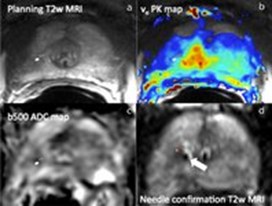
What is a Prostate MRI?
Multi-parametric prostate MRI (mpMRI) is a new technique available to men.
The test assists in the diagnosis of prostate cancer.
We pioneered this technique in Australia here at the Wesley Hospital in conjunction with Professor Jelle Barentsz (Radboud University, Netherlands) who is a world leader in mpMRI.
Wesley Medical Imaging is currently one of the most experienced mpMRI centres in the world.
A Medicare rebate is now available under certain criteria thanks largely to the ground-breaking research conducted at The Wesley Hospital.
What is Involved in a mpMRI Scan?
The technique is a non-invasive test that uses a powerful magnetic field to obtain pictures of the prostate gland. The test requires a patient to lie still on the MRI table and typically takes around 30 minutes to perform.
Several images are then taken of the prostate to see if there are any areas that are concerning for cancer.
mpMRI Review
A follow-up appointment will be made to review your mpMRI Scan results. The scan will either show suspicious areas or not.
If suspicious areas are seen, then a Prostate Biopsy can be arranged and the abnormal areas sampled.
This biopsy can be performed
- in the MRI unit itself (in-gantry),
- in the operating theatre where the urologist can target the abnormal areas either by using a mental image of the MRI (cognitive targeting),
- by fusing the MRI image with ultrasound in theatre (fusion techniques).
In all of these techniques, the Prostate Biopsy involves inserting a needle into the Prostate either
- through the skin between the scrotum and the anus (transperineal) or
- through the rectum (transrectal).
- Dr Gianduzzo performs all of his biopsies using a transperineal approach because of the significantly lower risk of infection (<1%) compared to the transrectal route (3-5%).
Scope of mpMRI
It is important to note that some cancers can be missed by mpMRI. It is not yet clear how good a negative scan is at excluding Prostate Cancer. In some cases, it may be reasonable to simply observe your PSA level if the scan is negative. However, in other cases, we may still elect to proceed with a standard prostate biopsy if your PSA tests indicate that there is a moderate to high risk of cancer.
Why Have a mpMRI?
Patients often then ask, why do the scan at all if that is the case?
The reason is that if the scan is positive, then that will help make any Prostate Biopsy more accurate because it can clearly demonstrate the abnormal areas that need to be targeted.
In summary, a positive scan is useful in identifying that a biopsy is needed and in directing where the needles should go, while a negative scan may allow your PSA to be watched in some cases, while in others a biopsy may still be required




